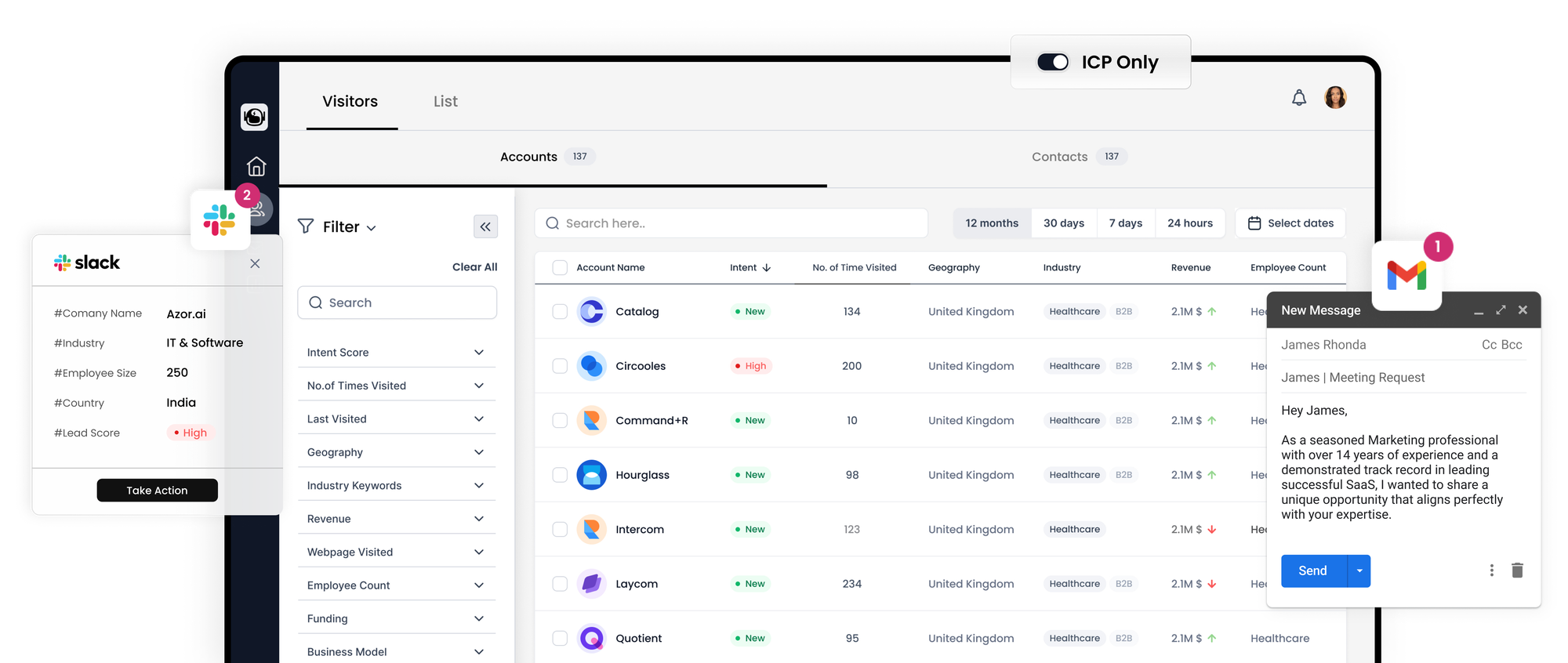Account-Based Marketing (ABM) Explained

Account-Based Marketing (ABM) is a strategic approach in B2B marketing where the focus is on individual prospect accounts that hold high-value potential. ABM is distinguished by its personalized marketing campaigns, which are crafted to resonate with the needs and characteristics of specific accounts.
ABM is not just about lead acquisition; it encompasses marketing efforts aimed at growth within existing customer accounts to drive upselling and cross-selling. This strategic focus aims to maximize the value extracted from significant accounts.

Advantages of Account-Based Marketing
ABM is gaining traction among B2B companies targeting larger, more strategic accounts due to several compelling advantages:
- **Personalization**: ABM's cornerstone is its highly tailored marketing messages, created based on in-depth knowledge of the customer, ensuring relevance and impact.
- **Alignment of Sales and Marketing**: ABM fosters a collaborative environment where both sales and marketing teams work in tandem, identifying and nurturing potential accounts together.
- **Efficient Sales Process**: ABM targets all stakeholders within an organization simultaneously, potentially reducing the time taken to close deals as opposed to traditional approaches that may engage stakeholders sequentially.
- **Measurable Returns**: ABM offers clarity and measurability in outcomes, often cited for providing the best ROI compared to other marketing strategies, with 85% of marketers reporting superior returns.
- **Resource Optimization**: With its targeted focus, ABM minimizes wastage of time and resources, allowing for reallocation to the most promising prospects.
Illustrations of Account-Based Marketing in Action:
ABM strategies vary across companies, tailored to their unique segments, and leveraged through the most effective channels for those segments. Here are some examples of ABM tactics:
- **Events**: Tailored experiences such as custom invites and exclusive engagements for prospects from target accounts during events can significantly influence decision-makers.
- **Webinars**: Custom webinars designed with the interests and timelines of target accounts in mind can enhance relevance and engagement.
- **Direct Mail**: Leveraging the personal touch of direct mail can help stand out in a digital world, offering more impactful engagement with prospects.
- **Email Campaigns**: Unlike mass marketing, ABM involves crafting individualized email communications, addressing the unique needs of each recipient.
- **Paid Advertising**: Platforms like LinkedIn enable pinpoint targeting for ads, allowing for precise focus on select companies and roles, rather than a broad, less targeted audience.
- **Website Personalization**: Beyond driving targeted traffic, ABM extends to personalized web experiences for visitors from target accounts, contrasting with a one-size-fits-all website.
Implementing ABM involves a shift from a quantity-focused approach to a quality-centric mindset, prioritizing deeper engagement with fewer, but more significant, prospects. It requires meticulous planning, execution, and coordination across multiple marketing channels and alignment with sales objectives to deliver customized experiences that speak directly to the needs of high-value accounts.
Implementing Account-Based Marketing: A Practical Guide
Here’s a systematic approach to launching an account-based marketing (ABM) initiative:
Step 1: Select High-Value Targets
Begin by identifying the accounts with the highest revenue potential for your business.
Step 2: In-Depth Account Analysis
Gather insights into these accounts, understanding their unique needs, challenges, and the stage they are at within the buying journey.
Step 3: Craft Targeted Campaigns
Utilize the data collected to create marketing initiatives tailored to the preferences and requirements of each account.
Step 4: Execute the Campaigns
Roll out these personalized marketing campaigns directed at your chosen accounts.
Step 5: Evaluate Campaign Performance
Monitor and measure the outcomes of your campaigns to assess effectiveness and identify areas for improvement.
Personalization in Account-Based Marketing
Personalization is crucial in ABM, extending to website experiences to make interactions as relevant as possible for each target account. This involves customizing various aspects of your website such as messaging, imagery, calls-to-action, and testimonials to mirror the interests and needs of visitors from target accounts.
To implement web personalization in ABM, you typically utilize firmographic data derived from reverse IP lookups or external data sources to identify visitors. Once you pinpoint the visiting company, you can then align their experience with your ABM objectives if they’re listed as a target account.
Examples of Web Personalization in ABM:
- **Tailored Messaging**: Changing the website's copy to address the specific industry or pain points of the visiting account.
- **Custom Imagery**: Displaying images that reflect the visitor's industry or use cases of your product relevant to them.
- **Dynamic Calls-to-Action (CTAs)**: Altering CTAs to correspond with the visitor’s stage in the sales funnel, making them more relevant and actionable.
- **Adjusted Social Proof**: Showcasing testimonials, case studies, or client logos that resonate with the visitor’s sector or scale.
In essence, personalization in ABM is about making each target account feel that your website and campaigns speak directly to them, thus enhancing engagement and increasing the chances of conversion.
